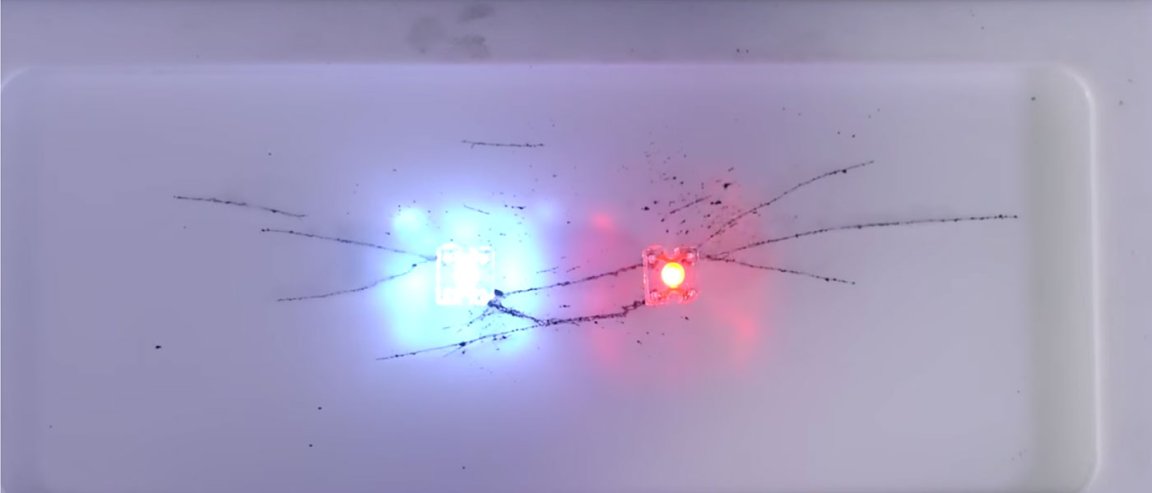
Scientists from Rice University found a way to conduct electricity without making physical contact between the circuit and the energy source. Using a Tesla coil’s antenna to project a gradient high-voltage forcefield into air, they were able to polarize carbon nanotubes within this Teslaphoretic (TEP) field, which then spring out like webs to assemble themselves into wires.

Although directed motion and self-assembly has been achieved using conventional electric fields before, it was restricted to small-scale structures.
The longest wire assembled through teslaphoresis was 15 centimeters so far. But with the high fidelity of the long, self-assembled, parallel nanotube lines to the TEP field, the study, published in ACS Nano, asserts that Teslaphoresis can effectively direct self-assembly on a macroscale as well.
Through Teslaphoresis, the team was able to wirelessly power nanotube-based LED circuits at remote distances, more than 30cm. The scientists hope to explore the technology’s potential in biomedical engineering and in many other industries in the near future.